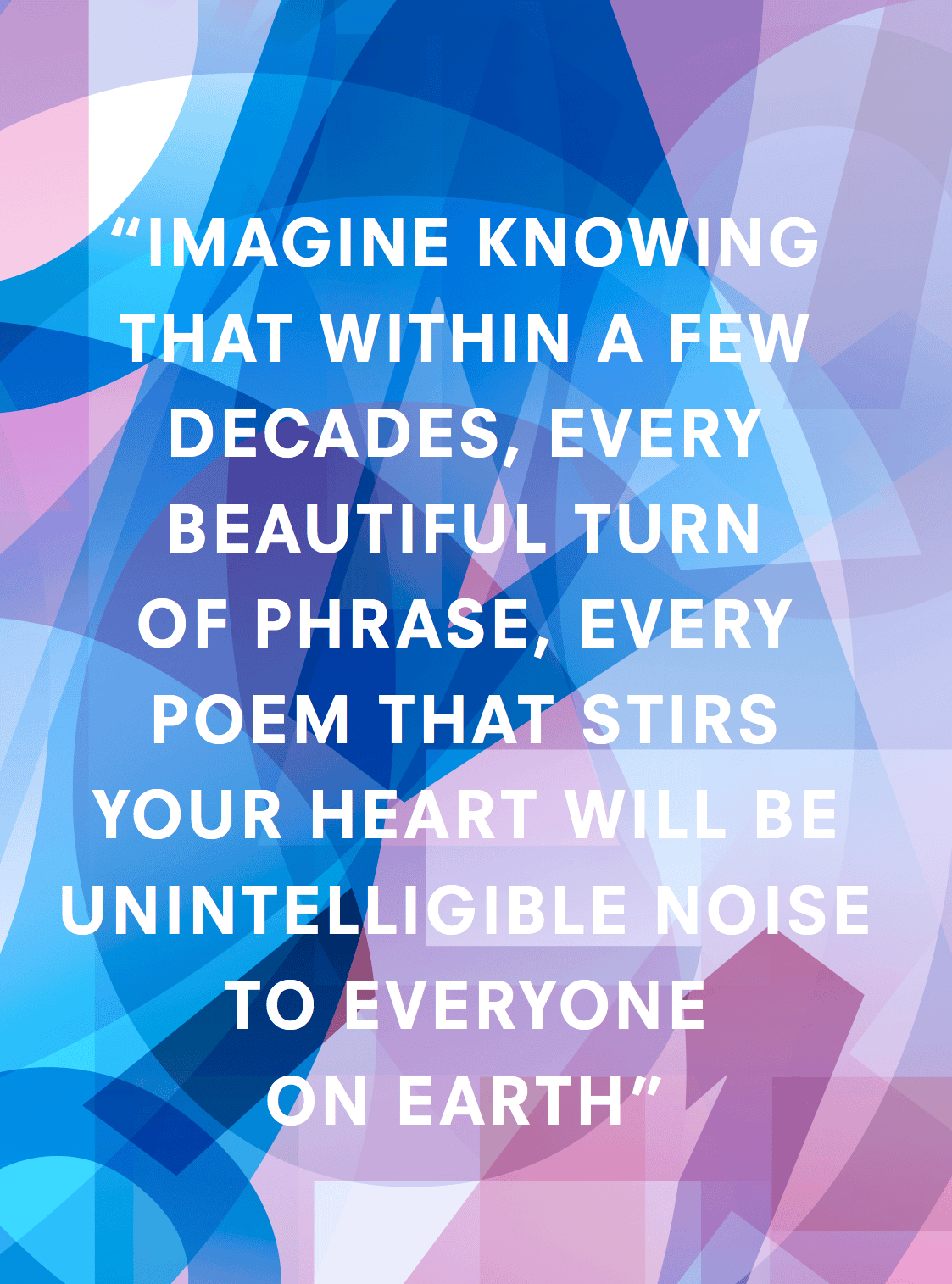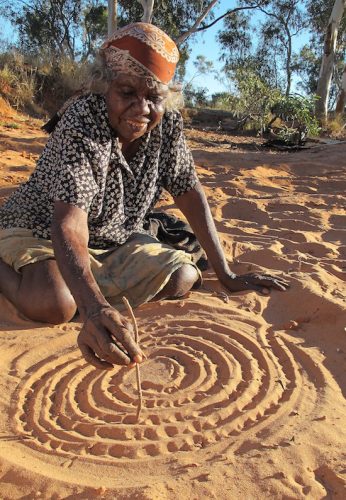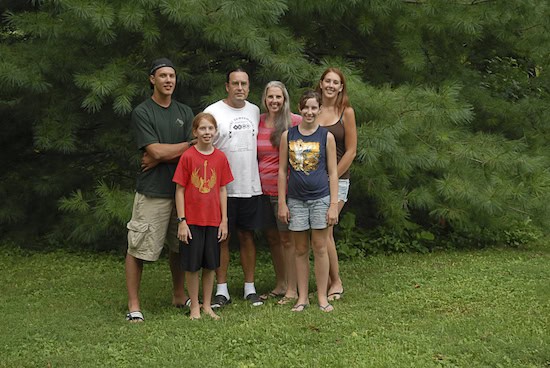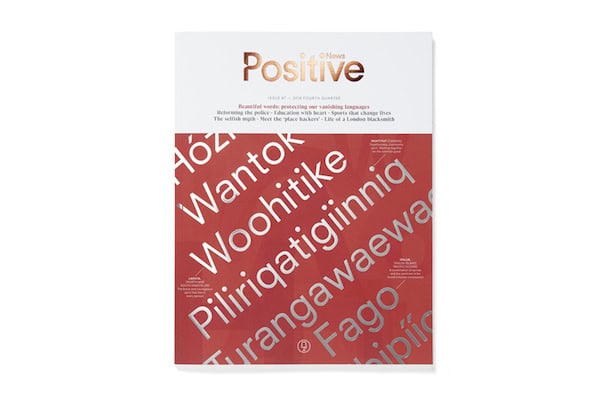With half of the world’s languages expected to vanish by the end of the century, the race is on to document them. We meet those working to save the world’s endangered tongues, treasure troves of cultural diversity that capture what it means to be human
Naturalists exploring the thickly forested Hawaiian island of Kauai stood still, holding recording equipment to the treetops. They had picked up the tune of the native Kauai o’o bird, a species that mates for life. After each trill, the bird paused, then called again. But his song was to a female who would never come. Tending an empty nest, he was the very last of his kind. His call to an unhearing world captured a once-in-a-species kind of loneliness.
While most people know about declining biodiversity – plants, birds and animals – many are unaware that human linguistic diversity is shrinking rapidly too. Of the 7,000 languages spoken by people across the world, 50 per cent are expected to disappear within the lifetimes of today’s children. A language dies every 14 days. In our increasingly globalised and connected world, does this matter?
It does, because we don’t just lose a different set of words, but an entire way of seeing the world, explains Anna Belew, a PhD student in linguistics at the University of Hawaii, who speaks to me from Cameroon where she is carrying out fieldwork.
“Languages are the vehicles of human culture, experience, knowledge and meaning,” she says. “Almost everything we do is mediated through language — joking, solving problems, giving directions, building houses, sharing our hopes and fears — and each language has unique ways of expressing these things. Usually, when a language is lost, a huge amount of culture, experience and knowledge is also lost.”
Languages are the vehicles of human culture, experience, knowledge and meaning
The language of Kayardild, spoken on the South Wellesley Islands in Australia by now fewer than 10 people, holds one example. Speakers here think about physical space in a very different way than speakers of English, Japanese or Swahili. In Kayardild, the primary way of talking about space is by using north, south, east and west. So a person on a crowded bus might be asked to “scoot south a little” or someone might say: “Look out! There’s a snake by your east foot!”
Belew says: “Kayardild speakers, no matter where they are or how well they know the location, can tell you right away, within a few degrees’ accuracy, which direction they’re facing. If Kayardild and other cardinal direction languages were lost, we would also lose the knowledge that the human brain can be a precise compass.”
There are research institutes all around the world dedicated to reversing this trend. Belew works closely with one, the Catalogue of Endangered Languages, which provides accurate, up-to-date information about each of the world’s endangered languages. It has so far amassed information about 3,346 languages from more than 1,600 sources.

Illustration: Studio Blackburn
Mandana Seyfeddinipur is programme director of another, the Endangered Languages Documentation Programme at SOAS, University of London. She says people ask her: in an age of Google Translate, is language loss really a problem? Language is a living thing, she responds, so dramatic shifts are to be expected, but today’s rate of loss is unprecedented.
“People are increasingly moving to cities and once they’re there, they try to adjust. They want social and economic mobility for themselves and for their children so they shift from their mother tongue to English or Spanish or another of the major languages. This is natural: adaptation is what humanity does. But what we’re observing now is what we think of as the fifth mass extinction. These languages are going at a dramatic speed.”
Linguistic diversity and biodiversity are tightly linked; areas of high biodiversity often correspond with areas where a wide range of languages are spoken. The Living Tongues Institute, in Oregon in the US, has created a map of such biocultural diversity ‘hotspots’.
Belew says that the knowledge necessary for conserving biodiversity is often embedded in small or endangered languages. “There may be words that convey the fact that two plants grow well together, or names for animal species which are still unknown to academic science.”
More than words
There are centuries of knowledge acquired and woven into a social life system, explains Seyfeddinipur. A people’s cosmology, beliefs, value systems and knowledge about plants, farming, the land and the ocean are all part of their language.
“Anyone who speaks another language knows it’s often impossible to translate. Sometimes a single sentence in one language requires three paragraphs to explain it. Many of these languages are oral so they don’t have writing systems.”

Violet Petyarr telling the angkwerey-angkwerey or ‘elder sister’ story. Iylenty outstation, Utopia, Northern Territory, Australia. Image: Jenny Green
Some contain words that capture entirely unique cultural situations and experiences. As Tiffany Watt Smith details in The Book of Human Emotions, the Baining people who live in the mountains of Papua New Guinea leave a bowl of water out overnight to absorb ‘awumbuk’, the sense of gloom and inertia that descends when a much-loved guest departs.
In Japanese, ‘amae’ describes the urge to fall into the arms of a loved one in order to be protected and comforted. The Inuit word ‘iktsuarpok’ captures that fidgety, impatient feeling when visitors are due to arrive, causing them to scan the frozen Arctic plains for approaching sleds. And the Sanskrit word ‘kalpa’ describes the passing of time on a cosmological scale.
Jennifer Green, a linguist based at the University of Melbourne, works with indigenous Australian communities. She has documented the cultural practice of sand stories, a traditional form of indigenous storytelling, into which speech, song, sign, gesture and drawing are incorporated. “That blew me away,” says Seyfeddinipur. “I love its fundamental multi-modality: that we speak with our hands and that we draw in the sand. It’s not just a sound stream but so much richer.”
Technology is a perhaps surprising ally in the race to save vanishing voices. Aside from databases that collect endangered languages — the SOAS-based project has gathered detailed information on 300 since its inception in 2002 — social media and mobile phones are proving important too.
Mexican children have been using a Facebook group to practise Chatino, a set of indigenous Mesoamerican languages. While in countries such as Oman and Yemen, the younger generation are sending each other text messages in traditional languages that have been waning in popularity.
“They start messaging each other in South Arabian – using the Latin script on the mobile phones,” laughs Seyfeddinipur, as she references the findings of work by Janet Watson at the University of Leeds. “That’s amazing to me. Where there’s a desire to use a language, creativity naturally follows. That’s one of the hopes we have: that technology will support some of our work.”
Where there’s a desire to use a language, creativity naturally follows
The UN declaration of the Rights of Indigenous Peoples, adopted in 2007, also marks a step forward. It addresses specifically the right to speak and use one’s own language. “We need to fight to uphold that right for those who face discrimination, or even persecution or violence, for using their own languages,” says Belew, from Hawaii.
Bringing languages home
What does it take to bring a language back, if it has fallen out of use completely? The Myaamia language, originally spoken in a wide area around the Mississippi river in the US, became a ‘sleeping’ language in the 1960s when the last native speakers died. After the death of his grandfather, Daryl Baldwin found a list of Myaamia words among his possessions, and when his first child was born in 1989, he used it as a starting point. “I recognised that something was missing in my own ethnic identity development and I became interested in filling that void by learning my ancestral language,” he says.

The Baldwin family are working to bring their ancestral language of Myaamia back to life
The Baldwins ?– Daryl, his wife Karen, and their children Jessie, Jarrid, Emma and Elliot ?– set about the challenge as a family, putting labels around their house marked with the Myaamia words for common objects and activities. “We were young and uninformed,?” says Daryl, “?but very committed?.”
Because the language fell dormant in the mid 1900s, some vocabulary for modern life was missing. “We now have words such as kiinteelintaakani (computer) and aacimwaapiikwi (internet),” says Daryl. They even devised a particularly satisfying word for Santa Claus: ‘hohowa’.
What started as home-based language learning grew into a community-wide project. Daryl helped found the Myaamia Center, which is now linked to Miami University and formal teaching programmes.
Despite the many dedicated projects set up to tackle the challenge of endangered languages, the challenge ahead is immense. If the world’s voices played a symphony, the sounds from the orchestra are being plucked out, one by one, until only a few remain. This is a painfully sad position, agrees Belew. “Imagine being the last generation of speakers of English, and knowing that within a few decades, every beautiful turn of phrase, every favourite word, every poem that stirs your heart will be unintelligible noise to everyone on earth.”
But she finds cause for optimism in the dedication to traditional languages she has seen arise from people’s love for their communities. “It’s possible for families, communities and dedicated individuals to make huge strides towards conserving their endangered languages. If there are adults who speak the language well, and children to learn it, the efforts of a small group of people can keep the language going strong for another generation.
“It’s immensely moving,” she says. “I’ve seen people just light up, and come alive in a new way when speaking their own languages.”

This feature is the cover story from Positive News issue 87. Designed by Studio Blackburn
Find our list of 10 inspiring and beautiful words, here.
Main illustration: Studio Blackburn